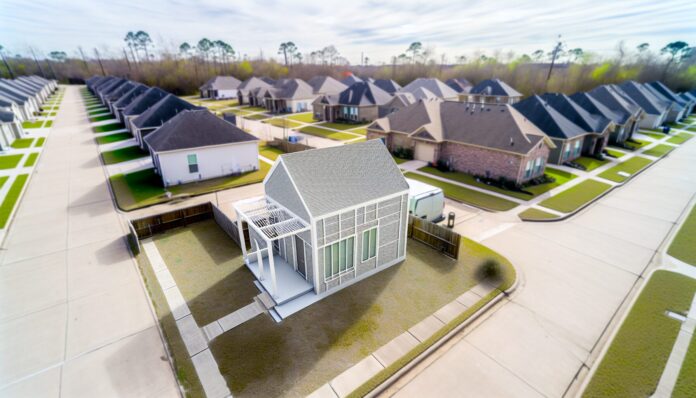Houston is on the brink of a housing revolution as the city prepares to unveil its first 3D-printed home community. This groundbreaking project combines cutting-edge construction technology with a vision for sustainable and affordable living, setting a new benchmark for residential development in the United States.
3D Printing in Construction: A New Era for Housing
3D printing, also known as additive manufacturing, has been making waves across various industries, and construction is no exception. By layering concrete or other building materials through a robotic arm or gantry system, 3D printing allows for faster, more cost-effective, and environmentally friendly construction. The technology reduces material waste, lowers labor costs, and enables complex architectural designs that would be difficult or expensive to achieve using traditional methods.
In Houston, this innovation is being brought to life through a collaboration between construction technology company ICON and homebuilder Lennar. The project, known as Wolf Ranch, is located in Georgetown, just north of Austin, and is part of a broader initiative to address housing shortages and affordability challenges in Texas and beyond.
Inside Houston’s 3D-Printed Home Community
The Wolf Ranch community will feature 100 homes, each constructed using ICON’s proprietary Vulcan construction system. This system uses a specialized concrete mix called Lavacrete, which is extruded layer by layer to form the walls of each home. The result is a durable, energy-efficient structure that can be built in a fraction of the time required for traditional homes.
Each home in the community will range from 1,500 to 2,100 square feet and include three to four bedrooms. The designs blend modern aesthetics with practical layouts, and the homes are engineered to meet strict building codes and withstand extreme weather conditions, including hurricanes and high winds.
In addition to their structural benefits, the 3D-printed homes are also designed with sustainability in mind. The Lavacrete material offers excellent thermal insulation, reducing the need for heating and cooling. Moreover, the precision of 3D printing minimizes construction waste, contributing to a lower environmental footprint.
Affordability and Accessibility Through Innovation
One of the most compelling aspects of the Houston 3D-printed home community is its potential to make homeownership more accessible. By streamlining the construction process and reducing reliance on manual labor, 3D printing can significantly lower the cost of building homes. This, in turn, can help address the growing demand for affordable housing in urban and suburban areas.
ICON and Lennar have emphasized that the homes in Wolf Ranch will be competitively priced, making them accessible to a wide range of buyers. The project also includes smart home features and energy-efficient systems, offering long-term savings on utility bills and maintenance costs.
As the housing market continues to grapple with supply chain disruptions and labor shortages, 3D printing offers a scalable solution that can help meet demand without compromising on quality or sustainability.
The Future of 3D-Printed Housing
Houston’s 3D-printed home community is part of a growing trend that is reshaping the construction industry. Around the world, similar projects are being developed to provide rapid, affordable housing in areas affected by natural disasters, population growth, or economic challenges.
In the U.S., ICON has already completed several high-profile projects, including 3D-printed homes for the homeless in Austin and a Mars simulation habitat for NASA. The company’s work in Houston represents a significant step toward mainstream adoption of 3D printing in residential construction.
As technology continues to evolve, experts predict that 3D-printed homes will become increasingly common, offering a viable alternative to traditional building methods. With benefits ranging from cost savings to environmental sustainability, this innovative approach has the potential to transform how we think about housing in the 21st century.
Houston’s first 3D-printed home community is more than just a construction project—it’s a glimpse into the future of living. As the homes near completion, they stand as a testament to what’s possible when technology and vision come together to solve real-world problems.
Source: Click2Houston

